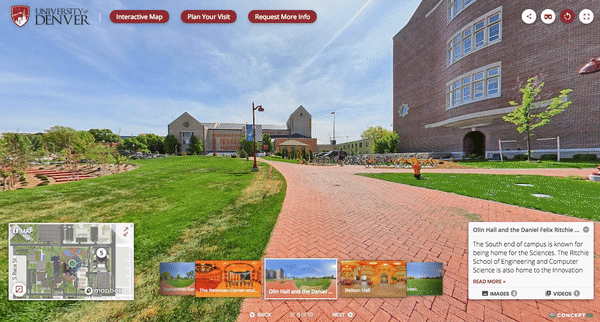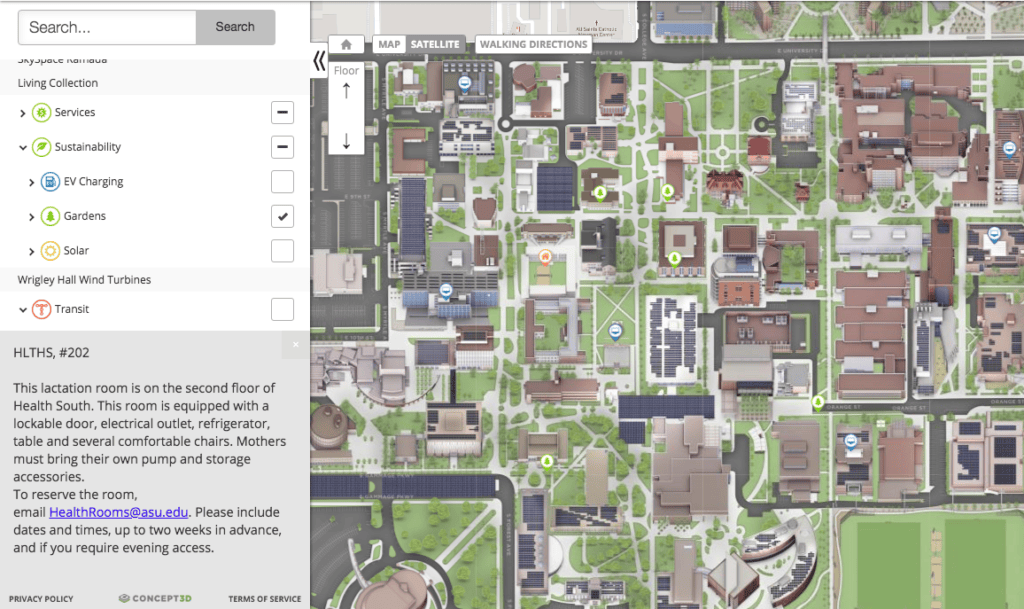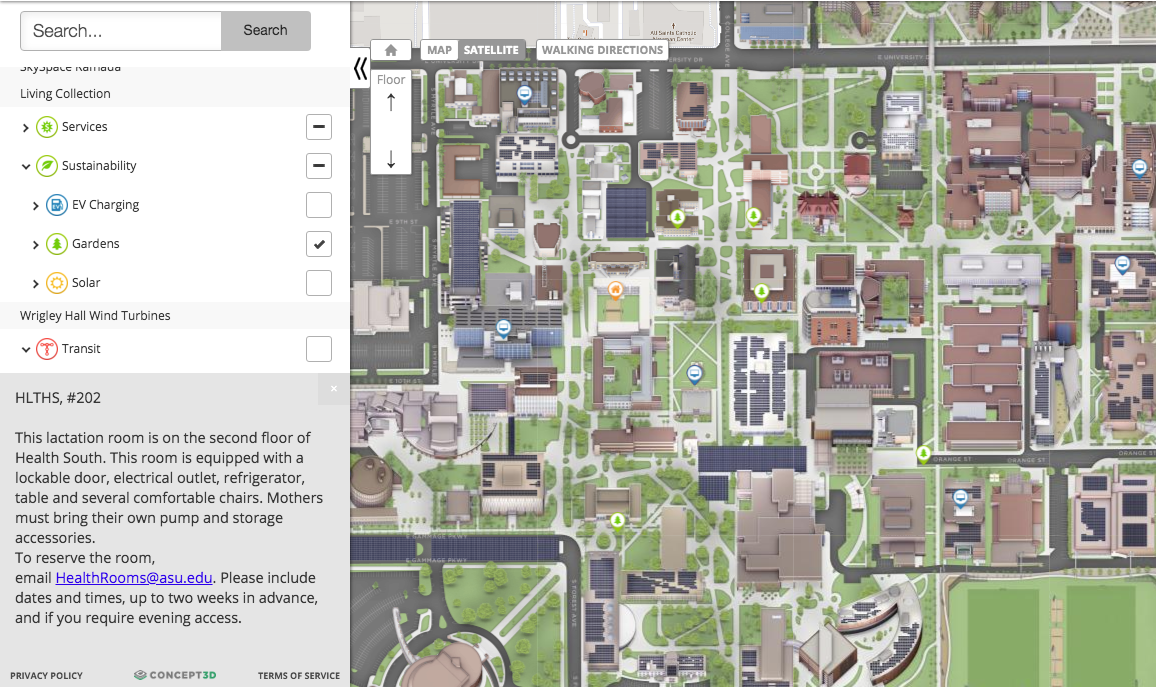Higher education marketing has seen a transformation in the past decade. Where once, colleges and universities could focus on relatively simple marketing tactics to get their name out, the market has become much more competitive in recent years.
In many states across the United States, the number of high school graduates is getting smaller. Meanwhile, an increasing number of colleges and universities are competing for these dwindling numbers of students. The department of education estimates that there are currently more than 7,000 post-secondary institutions in the country.
That, in turn, has brought higher ed marketing to the forefront of attention for countless colleges. Placing a few digital ads or attending some college fairs is simply no longer enough to remain competitive. A more integrated approach is necessary to catch the attention of students and their parents.
A number of best practices have emerged in recent years that accomplish just that goal. They range from simple website optimization to full-funnel marketing integration. All of them, though, have one thing in common: they can be significantly enhanced through virtual college campus maps and interactive tours.
Let’s examine each of the below four best practices in higher education marketing today through the lens of how virtual tours can make a difference in using these tactics to get in front of your audience.
1. Optimize Your Website for the Modern Student
Your website is the overwhelmingly favorite tool for future students researching potential colleges. In fact, students and their parents prefer it to channels like email, printed brochures, and even personal phone calls as a resource. It’s their first step, and it’s where they expect to find information at all stages throughout the search.
That has a clear implication. If your audience goes to your website first and foremost, you need to optimize its experience. That means leveraging a few general marketing best practices:
Build a Mobile Website Experience
We live in a mobile world. Today, 95% of teenagers say they have access to a smartphone, and almost half state they are online ‘almost instantly’. That’s how they’ll access your website, and you need to be prepared:
- Optimize your navigation to be touch-based
- Write the website back-end to ensure fast load times
- Build a responsive website that adjusts dynamically to screen sizes
- Write and develop content designed for consumption on small screens

Keep Your Website Journey Straightforward
The second requirement is to make sure your website goes to lengths to avoid confusing students and their parents. For a higher ed website, it’s tempting to give in to the forces that drive the content. Your homepage may be an amalgamation of donation requests, current news, application prompts, and beautiful campus shots.
The problem: if you try to be all things to all audiences, you don’t really make any of them happy. Teenagers and their parents are looking for content personalized to them. Whether through your homepage or your admissions-focused landing pages, make sure they immediately know what they’re looking for, and what steps they’re supposed to take next.
Represent Your University as Fully as Possible
This might seem to contradict the above point. But even as you look to streamline your content and website for your potential students, you have to make sure you don’t leave out important information. Education research firm Ruffalo Noel-Levitz, in its 2018 E-expectations report, noted the diversity of reasons your audience searches your site:
- cost/tuition information
- academic programs and degrees
- financial aid
- student life
- campus life
- school environment
Even as you keep your navigation and content simple and straightforward, you have to make sure you hit these points.
How Interactive Campus Maps Can Improve Your Website
Modern audiences want specific information at their fingertips. They’re looking for a smooth mobile experience to find out various facts about your university. Interactive campus maps fit perfectly into that equation.
The right campus map not only adjusts to smaller screens in size, but also in functionality. It integrates seamlessly with map apps like Google or Apple maps. Most importantly, it offers layers that allow you to highlight not just the physical layout, but more interactive content. You can share information easily, but also allow your audience to learn more about the topics they’re most invested in.
2. Prepare for Mystery Shoppers
We like to think of the recruitment funnel as linear. A prospect is interested, becomes an inquiry, visits a campus event, and eventually applies. Unfortunately, that mode of thinking is becoming outdated.
In a recent article, eCampus News described what has become, in many ways, the new normal:
The rise of the stealth student should come as no surprise in today’s “Uber of everything” world. Indeed, the mobile revolution has empowered prospective students to gather ample data about virtually any school to inform their decision about whether to apply for admission.
In other words, students decide to jump in and out of the funnel at any point in the process. They expect an admissions experience that accommodates this type of self-service mindset.
Don’t Hide Your Application Options
The first strategy is simple: make sure your audience doesn’t just see the next step, but the next few potential steps. Every admissions-related web page should include opportunities to click through to inquiry forms, visiting options, and your online application.
Offer Late-Funnel Information Throughout Your Content
The same general philosophy also needs to apply to your content. Don’t assume your major pages are only relevant for students early in the funnel. Instead, build content designed to speak to multiple stages of that funnel for maximum success.
Your recently purchased search names may not be worried about the FAFSA yet. That doesn’t mean your financial aid homepage cannot speak to that topic, or that your homepage shouldn’t call out to it shortly before the deadline. Understand your audience’s needs, even if they haven’t raised their hand yet. Then, build out content designed to speak to these needs.

The Self-Service Approach of Virtual Tours
Every higher ed admissions and marketing professional knows about the value of a campus visit. If you can get families to your campus, their chances of application and enrollment increase dramatically. But what if they never raise their hand to actually confirm their visit during an open house or weekday tour?
Virtual tours, in many ways, are a perfect opportunity to counteract and even leverage this self-service approach. They offer your audience a glimpse into your campus and its daily life, even if the student lives across the country or only has five minutes to spare. You can even build in additional opportunities through integrated inquiry forms to capture relevant information and take the ‘stealth’ out of the applicant.
In its E-expectations survey, Ruffalo Noel-Levitz found virtual tours ranking in the top 10 most influential information resources for potential students and parents. Meanwhile 59% of juniors and 63% of seniors said a good virtual tour enhanced their likelihood of enrolling.
3. Embrace a Value-Based Approach
The age of simple promotion is over. Your audience has become numb to straightforward features like the size of your campus (or a few words saying how beautiful it is), your number of majors, or your student-faculty ratio. Every university is touting these same features.
Instead, higher ed marketing (and marketing as a whole) is shifting to a more value-based approach. Content marketing is on the rise, basing its premise on soft promotions that show the brand as an expert and valuable resource in their field. You can accomplish the same thing in your marketing efforts.
Present Yourself as an Admissions Resource
Hopefully, your admissions office is already embracing this concept. When a student calls or emails, they answer questions on topics ranging from tuition to FAFSA or redirect them to the right resource. It’s time for marketing to do the same thing.
Don’t say you offer personalized attention. Instead, show it through your marketing efforts. Build resource pages that highlight not just campus happenings and events, but also tips and tricks on any topic in the admissions funnel. The more of a resource you become, the more trust you gain—and improving your reputation tends to draw a straight line to increased revenue.
Build Content Designed for Parents and Students
The above section already alludes to it: the best way to build value for students is to build content specifically designed to answer your audience’s questions—sometimes even before they ask it. That means you have to:
- Know the common problems and questions students and their parents have in the admissions journey.
- Understand where they tend to look for answers to these problems.
- Segment your audience to see how these problems and questions differ by audience.

That content can come in many ways. Webinars on affording higher education can be immensely successful. Social media Q&A sessions make your campus resources available to your audiences on an ad-hoc basis. And of course, even a simple strategy of blogging on relevant topics regularly can be successful. These examples can give you a start in finding inspiration for the right kind of content marketing.
Turn Your Campus Visuals Into a Helpful Resource
Not all information your audience is looking for is as dense as the FAFSA. Sometimes, they just want to learn more about the buildings and campus resources for the specific major. A glossy shot of a science major in a lab probably won’t be enough to answer a student’s question about the equipment available in that lab.
You need more in-depth information, and more interactive visuals. Enter interactive campus maps, which leverage your visuals to make them valuable resources. Once you know the typical questions your audiences have about campus and student life as well as academics, you can build that into a tour or map layer to make it easily available to them.

4. Build a Personalized Communication Strategy
Personalization is key. Modern marketing stands at a crossroads: Channels traditionally designed to reach large audiences are starting to fail because these audiences would much rather see a message designed specifically for them and their needs.
Research repeatedly shows audiences across demographics embrace personalized content. They open and read through emails at higher rates if they get it, and become more likely to leave your website if they don’t. Those attitudes are pervasive. It pays to build your entire communication strategy around them.
Use Variable Data in Your Communications
The first step should be making sure your marketing materials all include at least some level of personalization. That’s easy to do on form letters and email, but might get more complex through other channels.
Difficult, of course, is not impossible. Modern CMS solutions increasingly promote website management systems that dynamically substitute content based on audience data. The same is true in printing, where digital press systems can use systems like mail merge to substitute variable data like pictures, layouts, and more. These are invaluable tools to meet the personalization needs of your audience.
Lay Out Communication Streams for Interest Segments
Never assume all your audiences look for the same type of information and communication. Parents and students will have different priorities. Urban students may look for different content than their rural counterparts. And of course, you have to account for non-student audiences like alumni and donors to the universities.
First, you need to identify your most important segments, ideally based not just on demographics but their interest areas. Then, build communication streams (print, digital, and direct outreach) designed for these interest areas. Even when you don’t customize your content for every single person, you can now make it more relevant.
Build Virtual Tours for Various Interest Groups
Virtual tours can help you build this more personalized approach, but only if you approach them right. A single map or layer might not be enough to satisfy this desire for customized content. With multiple layers and tours on the same map, you can get closer to success. Consider your options:
- Virtual tours specifically for students, parents, and alumni, each focusing on different aspects of the campus.
- Tours expanding beyond your campus and showing lifestyle and entertainment opportunities for urban students and adventure possibilities for more rural populations.
- Map layers designed for specific events, like commencement or new student orientation.
- Interest-based tours on issues like sustainability or architecture.
Of course, these are just some of the many possibilities. The more you can distinguish who your audience and interest groups are, the better you can build your 3D maps and virtual tours around them.

Are You Ready to Embrace the Future of Higher Ed Marketing?
Marketing in higher education is in a time of drastic change. Admissions and marketing offices around the country are realizing the old views—a view book via email with some phone follow-ups—are no longer enough. Instead, they’re beginning to embrace the future of promoting the college experience.
Now is the time to get involved with that same trend. Virtual maps are not the only key to success, but they play an integral part in turning theoretical marketing principles into reality. Learn about some of our clients, who have leveraged college campus tours to this effect. Then, contact us to start talking about how you can integrate interactive maps and tours into your marketing strategy and online experience.

